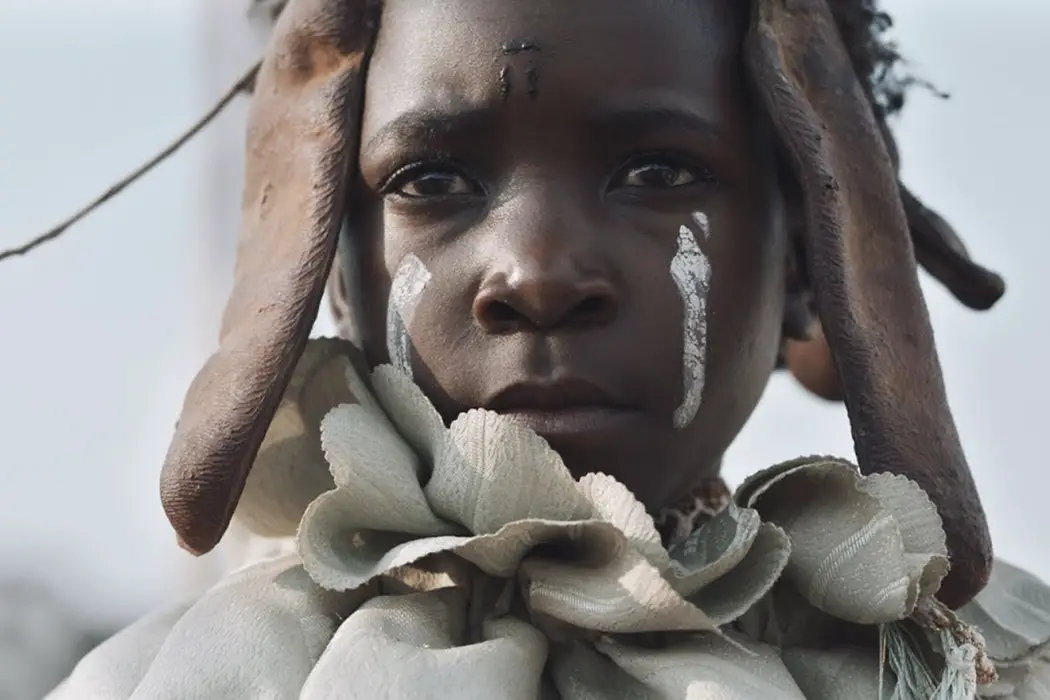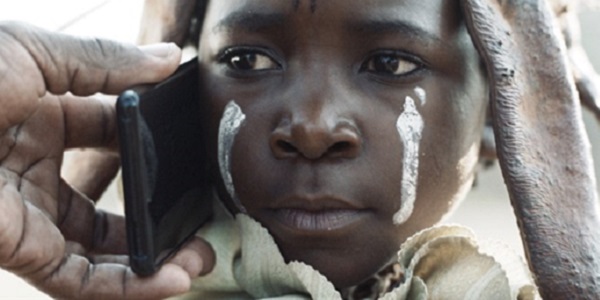I AM NOT A WITCH: A Haunting & Humorous Feature Debut

Lee Jutton has directed short films starring a killer toaster,…
The feature debut of the Zambia-born, Wales-raised filmmaker Rungano Nyoni, I Am Not a Witch is a visually striking, emotionally resonant satire of a surprising form of sexism that still exists in certain parts of the world: witch camps. Most commonly found in Ghana, witch camps are exactly what their name would imply: settlements comprised of women who have been accused of witchcraft. Ostracized from their home villages, these women have nowhere else to go and so are taken in by the camps, who immediately put them to work as both field hands and tourist attractions.
It is no coincidence that witch camps are primarily populated with women; it’s further evidence of a deep-seated misogyny that stretches back to the Salem witch trials and beyond. As Nyoni said in an interview with The Independent last year, “I am just trying to point out the absurdity of something that is misogynistic…In my research, I found that the ways that these people who held witches talked about women were extraordinary, so the film came from a place of anger.”
Indeed, I Am Not a Witch, while suffused with a thread of dark humor, is also a furious indictment of the way society continues to treat women and girls who do not fit neatly into the molds prescribed for them.
The Outsiders
I Am Not a Witch begins when an unusual young girl (Maggie Mulubwa) with no family or friends to speak of is accused of witchcraft by her village. A tired-looking police officer listens to a packed room of paranoid villagers pour forth proof that is largely frivolous; indeed, one man’s evidence of her evildoing is entirely based on a dream he had. But, to keep the peace, the officer calls in a government official named Mr. Banda (a superbly smug Henry B.J. Phiri), who runs a witch camp.

After an absurd, awkward performance by a witch doctor that serves as the girl’s trial, she is found guilty of witchcraft and taken into custody by Mr. Banda. Upon arrival in the witch camp, the young girl, dubbed Shula by the other witches, is attached to a large spool of ribbon designed to keep her from flying away and killing people. If she decides to stop being part of the witch camp and cuts the ribbon, she’ll be transformed into a goat.
Forced to choose between life in the camp or life as a goat, Shula chooses the former. The other witches spend their days working in the fields, white ribbons waving behind them in the breeze as their spools sit propped on top of poles jammed into the dirt, However, that’s not the life they want for young Shula – they want her to go to school. But instead of getting an education, Shula is dressed up in an elaborate costume and paraded through an assortment of villages by Mr. Banda to declare justice for miscellaneous crimes.
Heart of Darkness
In one incredibly absurd moment in I Am Not a Witch, Shula has been brought before a village to issue her first-ever judgment. But, she’s so unsure of who to declare guilty out of a lineup of alleged robbers that she asks Mr. Banda to call one of the elder witches on his cell phone, and stands there taking advice before finally pronouncing her judgment. Even more absurd is the fact that despite her utter lack of concrete evidence, Shula’s judgment is the correct one.
Is this proof that Shula is actually a witch or just a lucky guess? The film allows you to come to your own conclusions, condemning the treatment of the so-called witches as opposed to witchcraft itself.

The hypocrisy of villagers so backward in their beliefs that they need a witch to tell them who is guilty of a crime while standing and watching as the witch then consults modern technology for the answer, is one of many sharply funny moments in I Am Not a Witch. Delicately balancing on a thin line between comedy and tragedy, Nyoni’s satirical script highlights the irony inherent in a society that treats witches as both magical creatures and mundane tourist attractions, subject to flashbulbs in their faces as they sit obediently at the ends of their ribbons.
In another cutting moment, one of the witch’s daughters arrives at the camp – driven there by her lover, who happens to be the one who accused her mother of witchcraft in the first place – and delivers a series of wigs with silly celebrity knockoff names to the other witches in the camp. To see these women, treated like monsters by their communities, try on candy-colored wigs and crack into wry smiles is somehow both hilarious and heartbreaking. That they pay for the wigs with the bottles of gin that Shula has been given as payment for her judgments adds additional layers of emotion to an already complicated situation.
Tied Down
Nyoni’s cast is primarily composed of non-actors who give amazingly natural performances, including her truly magical lead. Mulubwa does not have much dialogue in the film, but Shula does not need to speak in order for her pain to be heard. When she experiences fleeting moments of contentment, such as finally getting to attend a class with other children, her face lights up like the sun; when she is swallowed up by sadness, such as when she watches one of the witches get attacked at the grocery store after the other customers spot her tell-tale spool of ribbon hidden in her shopping cart, her face crumbles. Shula is the heart of the film, and Mulubwa’s performance ensures that you’ll stay with her until the bitter end.

I Am Not a Witch is full of striking visuals, many of which are tied to the omnipresent spools of ribbons that follow the witches throughout the film. Indeed, early on in the film, Mr. Banda is thrilled to announce to the witches that thanks to the kindness of the government, they’ll now have longer ribbons than ever before! Just think of how much more freedom you’ll have, he says with an unabashedly bureaucratic wink.
Yet the ribbons serve as a reminder throughout the film that these women will never be free in this society. The white ribbons waving in the breeze tie them to the camp and their fates; to cut them would mean freedom, but it would also mean transformation into a goat. Which fate would you choose? I Am Not a Witch forces you to contemplate these and other uncomfortable questions that will stick with you long after the credits roll.
I Am Not A Witch: Conclusion
Carried by a flair for dramatic visual and a remarkable lead performance from Mulubwa, I Am Not a Witch is a fierce and undeniably feminist film unlike anything else in cinemas this year.
What do you think? Can you believe that witch camps still exist in parts of the world even in the twenty-first century? Share your thoughts in the comments below.
I Am Not a Witch was released in the U.S. on September 7, 2018. You can find more international release dates here.
Does content like this matter to you?
Become a Member and support film journalism. Unlock access to all of Film Inquiry`s great articles. Join a community of like-minded readers who are passionate about cinema - get access to our private members Network, give back to independent filmmakers, and more.
Lee Jutton has directed short films starring a killer toaster, a killer Christmas tree, and a not-killer leopard. Her writing has appeared in publications such as Film School Rejects, Bitch: A Feminist Response to Pop Culture, Bitch Flicks, TV Fanatic, and Just Press Play. When not watching, making, or writing about films, she can usually be found on Twitter obsessing over soccer, BTS, and her cat.













